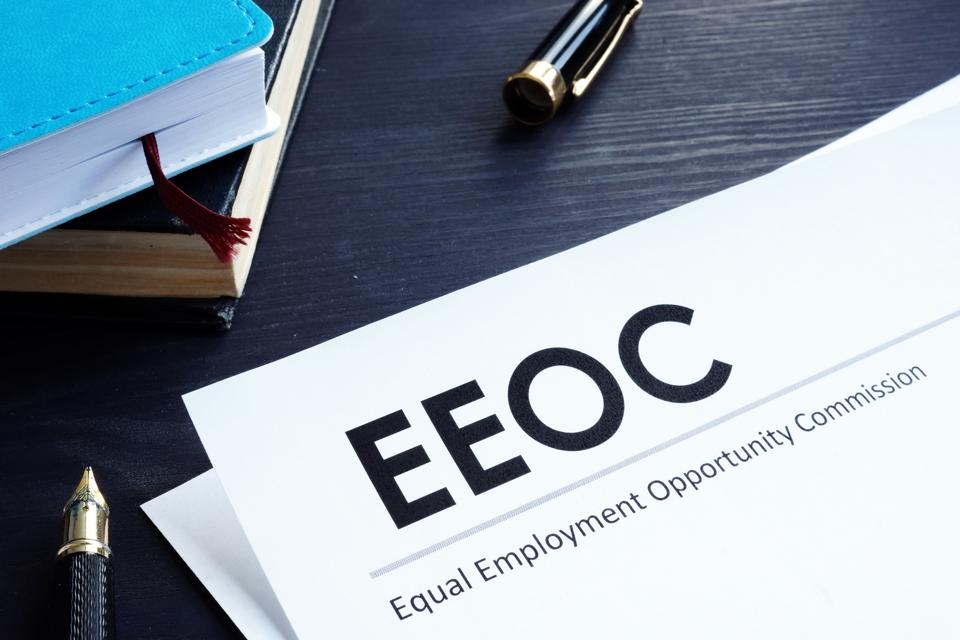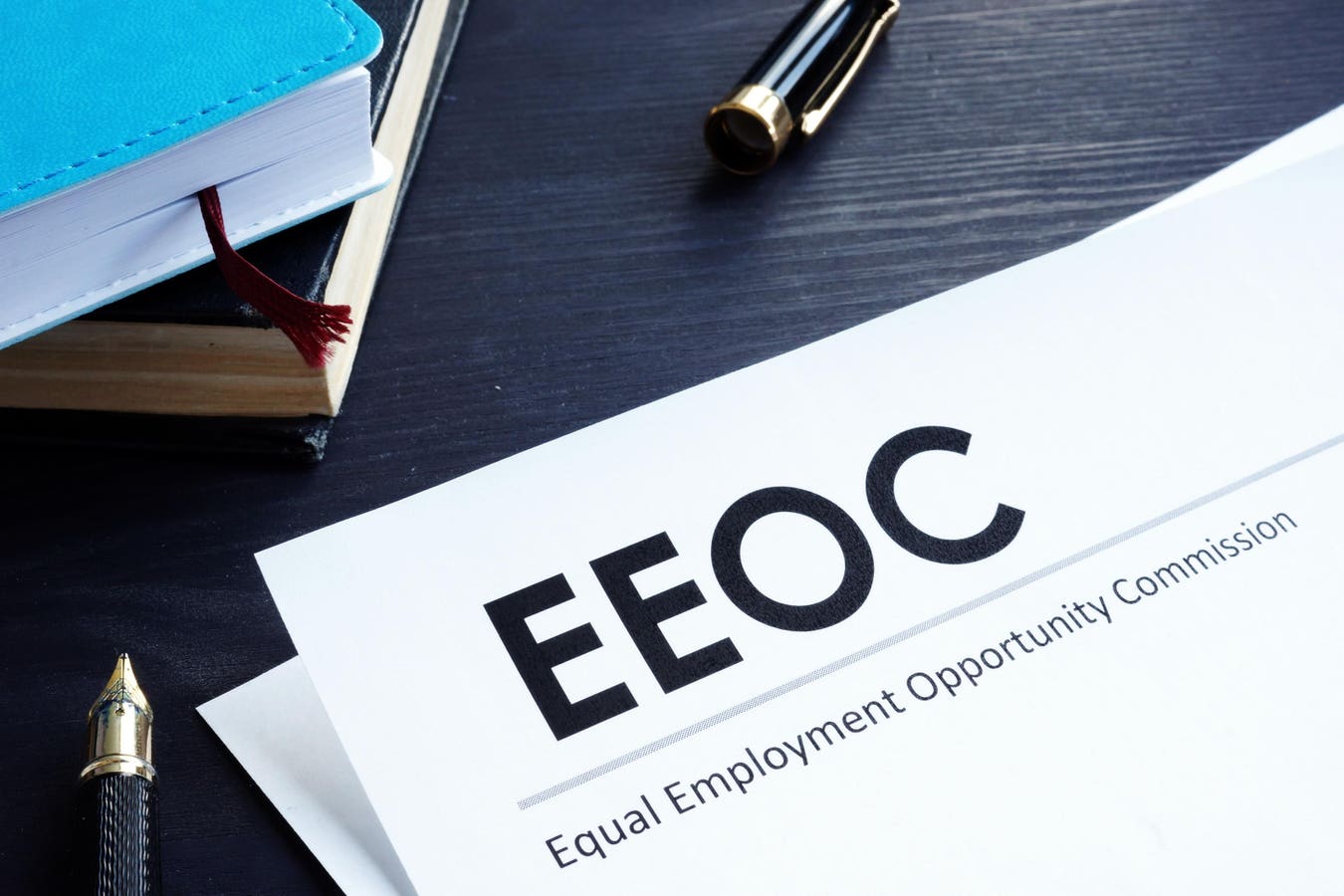
Equal Employment Opportunity Commission EEOC document and pen on a table.
getty
On October 7, the US Senate confirmed President Trump’s nominee, Brittany Panuccio, to fill an open vacancy as Commissioner on the Equal Employment Opportunity Commission (EEOC).
This act was critical, as the EEOC will now be able to pass votes after a long absence of a quorum. The President had removed Commissioners Jocelyn Samuels and Charlotte Burrows, leaving only Kalpana Kotagal and Andrea Lucas. This confirmation marks the first time this administration will have the necessary third vote to shift how the federal government enforces—or abandons—workplace civil rights, specifically around diversity, equity, and inclusion (DEI).
For the first time since the President’s inauguration, the EEOC can now execute binding action on workforce regulations, issue legal guidance, and highlight focus areas regarding litigation, allowing the agency to codify Trump’s priorities and executive orders.
The biggest question for leaders and DEI advocates is, will the EEOC end its annual EEO-1 reporting for companies with over 100 employees? The yearly data gathering practice has become the cornerstone metric of federal workplace diversity in the United States, a practice established for transparency over 60 years ago.
A New Majority, A New Mandate
With Panuccio’s confirmation, the EEOC can implement the administration’s vision—and his allies’ policy playbooks, including the Heritage Foundation’s Project 2025. Acting Chair Andrea Lucas acknowledged on X the EEOC is now “empowered to deliver fully on our promise to advance the most significant civil rights agenda in a generation.”
FILE – Andrea Lucas, nominee to be a member of the Equal Employment Opportunity Commission, testifies during a Senate Health, Education, Labor, and Pensions (HELP) Committee hearing, June 18, 2025, on Capitol Hill in Washington. (AP Photo/Mariam Zuhaib, File)
Copyright 2025 The Associated Press. All rights reserved.
That “agenda” looks very different from the EEOC of a year ago, when the agency focused on a Strategic Enforcement Plan (SEP) under President Biden, which emphasized protecting marginalized groups— minorities, LGBT+ individuals, and pregnant workers—and encouraged employers to identify and remove barriers to opportunity.
By contrast, the new Commission is prioritizing what it calls “rooting out unlawful DEI-motivated race and sex discrimination” and “defending the biological and binary reality of sex.”
The Commission is expected to act quickly to mirror the administration’s broader approach of protecting against ‘Anti American bias’ — prioritizing protections for religious employees, scrutinizing DEI programs for “reverse discrimination,” and re-establishing single-sex workplace spaces under the guise of women’s rights.
Marking a philosophical shift for the EEOC, the next step in the culture-and-compliance war could be the elimination of EEO-1 reporting.
The EEO-1 Report in the Crosshairs
The EEO-1 Report has been a mainstay of federal compliance since the 1960s, requiring private employers with 100 or more workers to submit demographic data by race, ethnicity, and gender. It tracks this data by hierarchy, along with other criteria such as salary. The information is aggregated and used to help the government identify systemic disparities and potential discrimination patterns across industries, companies and sectors.
Signage is displayed inside the Equal Employment Opportunity Commission (EEOC) headquarters in Washington, D.C., U.S in 2020. Photographer: Andrew Harrer/Bloomberg
© 2020 Bloomberg Finance LP
Critics of DEI argue that this data encourages “racial balancing” and fuels disparate-impact lawsuits which clog the system. Another perspective is around our peers, and their lack of transparency. Outside of the US, most other countries don’t require this type of reporting, and we shouldn’t either. When employee data is collected in other countries, many don’t include intra-country ethic data, such as ‘Hispanic-American’ or ‘African-American’, due to privacy. For instance, in Japan an employer may only ask employees are ‘Japanese’ or ‘foreigner’. The country will not ask if you are “Afro-Japanese” for example. If the EEO-1 report is eliminated, employees would no longer be asked to disclose their race or sexual orientation, deeming all Americans as simply “Americans”. Project 2025, asserted that EEO-1 report could “be used to support a charge of discrimination under a disparate impact theory” and lead to “racial quotas.”
A leaked EEOC memo from September 15, obtained by the Associated Press, revealed that the agency will no longer pursue disparate-impact cases—a move that effectively neuters one of civil rights law’s most important enforcement tools. Without disparate-impact analysis, EEO-1 data serves little purpose beyond optics—and that may be the point.
The Equal Employment Opportunity Commission (EEOC) seal hangs inside a hearing room at the headquarters in Washington, D.C., U.S., on Tuesday, Feb. 18, 2020. Photographer: Andrew Harrer/Bloomberg
© 2020 Bloomberg Finance LP
To formally end reporting, the EEOC would need to rewrite its regulations under Title VII of the Civil Rights Act of 1964, which authorizes the collection of such data. That process requires public notice and comment, but with a compliant majority in the house and senate along with supportive executive orders, the outcome may be only a matter of time.
What It Means for Employers
If the EEOC dismantles or suspends EEO-1 reporting, the effects will be immediate and far-reaching. For corporations, it would mean less transparency and fewer metrics to track workforce diversity—a relief to some, but a reputational risk for the many global brands that have tied their workforce identity and diversity to public accountability.
For employees, advocates, and investors, it would mark the end of an era of measurable equity, replacing it with an opaque environment where claims of fairness or bias are nearly impossible to verify.
For Chief Diversity Officers, DEI advocates and equity professionals the elimination of EEO-1 reporting could essentially cease the practice of corporate diversity, unless there was a new commitment toward other attributes such as neurodiversity, age, veterans status and disability. That along with a desire by companies to stay committed to investing in the role given its cultural limitations. Given the rise in workforce AI, Diversity practitioners may be needed to better sooth relationships at work between a human workforce and the AI tools, agents and clones that are being built, to work hand in hand.
Demonstrators against Harvard University’s admission process hold a banner that reads “Thank You President Trump 4 Meritocracy” during a protest at Copley Square in Boston, Massachusetts, U.S., on Sunday, Oct. 14, 2018. Photographer: Adam Glanzman/Bloomberg
© 2018 Bloomberg Finance LP
The Trump Administration and its allies frame this shift as “protecting meritocracy.” But history shows that without data, discrimination doesn’t disappear—it simply becomes harder to prove.
In the broader context, the EEOC’s transformation is part of a coordinated “End radical DEI” campaign reshaping federal policy across multiple agencies, from education to defense to labor. For employers navigating this volatile landscape now means more than avoiding lawsuits—it means understanding the politics and the language of the moment.
As the EEOC enters this new era, its legacy will hinge on one choice: whether it continues to collect the data that makes bias visible and prosecute those who don’t follow it? Or will the EEOC spend the next few years on the front lines of enforcement to ensure much of America’s cultural diversity in the workforce becomes invisible – at least on paper.
